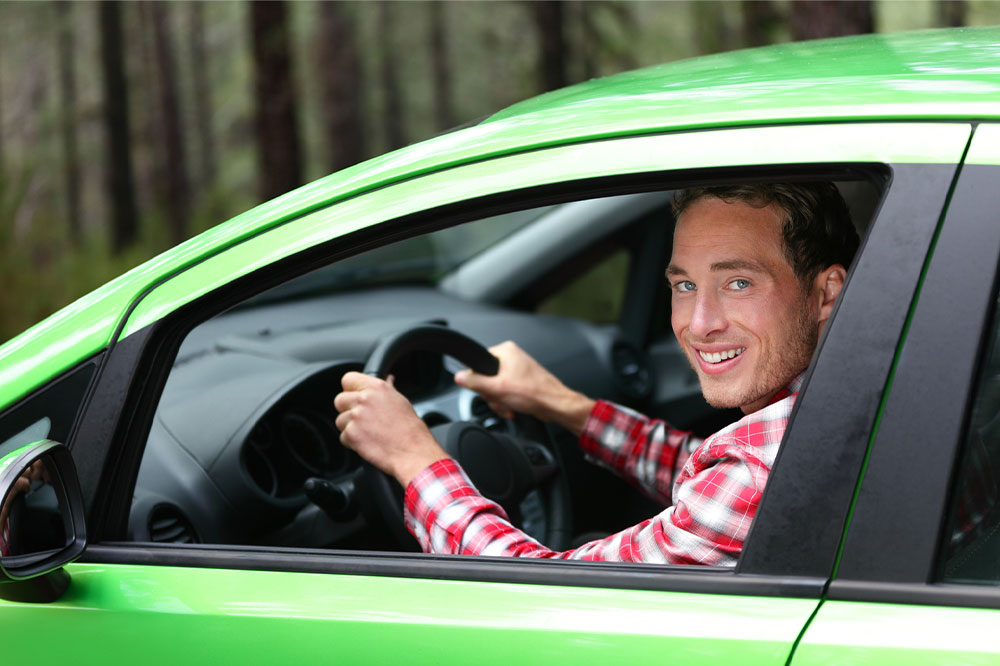
12 common mistakes new drivers should avoid
Learning how to drive is exciting and nerve-wracking. As you equip yourself with the skills to make traveling easier, you also learn to pay attention to others on the road. Mistakes are bound to occur when learning to navigate a car in new circumstances. However, knowing these mistakes can help you avoid them and become a safer driver. Here are 12 mistakes new drivers make and how to avoid them:
- Ignoring speed limits
Some new drivers feel overconfident once they receive their license and are more likely to overspeed. This can be extremely dangerous for them and others around them. Similarly, some drivers may feel underconfident and drive too slowly. This may also make them prone to more accidents, especially at intersections.To avoid these mistakes, follow the speed limit regulations specified for each area. These limits are decided upon by the state legislature, keeping in mind factors such as pedestrian movement, traffic flow, and roadway design. New drivers must regularly check for speed limit signs and follow them actively and routinely.
- Using the phone while driving
According to the American Automobile Association, distracted driving kills about nine people and injures over 1,000 people every day across the country. Using the phone while driving, whether to text, call, or navigate, is one of the leading causes of accidents worldwide. Here are some tips to prevent phone use while driving:- Keep the mobile device out of sight to prevent any temptation.
- Program the navigation system before starting your journey.
- Pull over to the side of the road and stop at a safe spot if a call or text is crucial.
- When riding with someone, ask them to help navigate, call, or send a message.
- Switch on the driving focus feature on the phone while driving.
- Refusing to wear a seat belt
Fastening the seat belt is essential to ensuring safety during a crash. Its primary purpose is to prevent violent jerks and protect passengers in cases of accidents or sudden braking. The seat belt also helps distribute the force more evenly to the stronger parts of the body, which are the shoulders and the hips. All passengers in the car must secure their seatbelts during a drive. Babies and younger children must be safely buckled in proper car seats. - Failing to look at the surroundings
You might initially stick to empty roads and parking lots when learning to drive, as getting used to driving on the road with distractions can take some time. To drive safely, you must remain aware of your surroundings and be prepared to navigate the car around jaywalking pedestrians, other drivers, potholes, and debris. Remain alert and focused when driving, and practice defensive driving techniques. - Failing to use the turn signals
Cars are equipped with turn signals so drivers can communicate their intentions with other drivers. This gives others a chance to anticipate others’ moves and drive accordingly. Failing to use turn signals can be dangerous and lead to accidents. Make sure to turn on the turn signal before turning, merging into another lane, reversing, parking, or driving out of a parking spot. Put on the turn signal at least 200 feet before turning or changing lanes. - Accelerating or braking too fast
Getting used to the car’s accelerator and brake pedals takes some practice. It is important to gain a fair estimate of their sensitivity to estimate how your car will react. This will help build confidence and make driving a smoother experience. - Forgetting to readjust the mirrors
It is essential to adjust the mirrors when driving to reduce blind spots. The rearview mirror should be adjusted so you can see everything directly out of the middle of the back windshield without lifting your head. The side mirror should be adjusted so you can see a sliver of the car when sitting straight. - Following too closely
Not leaving a safe space or tailgating a car is unsafe and impolite. An emergency brake in such a situation is likely to cause an accident. While driving, maintain a comfortable distance from the car in front. This will give the driver more time to react to any unforeseen circumstances. - Failing to give way to emergency vehicles
Emergency vehicles such as police cars, fire trucks, and ambulances have the right of way as they deal with life-and-death situations in the community. Whenever you hear sirens in the background, you must prepare to pull over or come to a complete stop to let these vehicles pass. - Speeding through yellow lights
While the red and green lights at a traffic stop have clear meanings, the yellow light may seem unspecified. Many drivers take it as a sign to speed up and drive through, which can be dangerous. The yellow signal is only an indicator that the red light is coming. You must slow down and prepare to stop at a yellow light. - Driving off too fast after the light turns green
While a green light is an indication to go, you must never be in a rush to drive off. Make sure to look both ways before crossing the intersection to ensure no cars are coming. This can help prevent serious accidents and save lives. - Failing to adjust the seat properly
The position of the seat also determines the control you will have over the car. When the seat is too far from the wheel, you may have to hyperextend your arms and legs, leading to a lack of control. The seat must be adjusted so that the wrists touch the wheel; this position is ideal to control the wheel and reach the pedals comfortably.
Avoid these twelve mistakes to become a better, safer driver!





